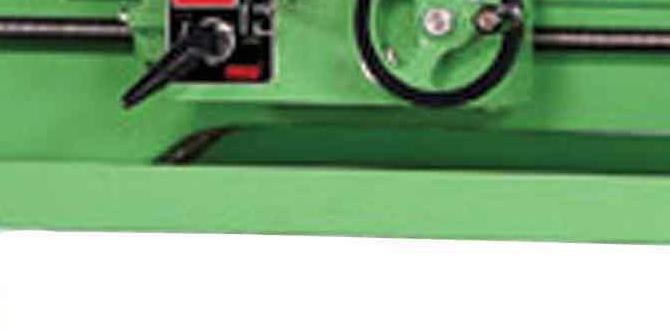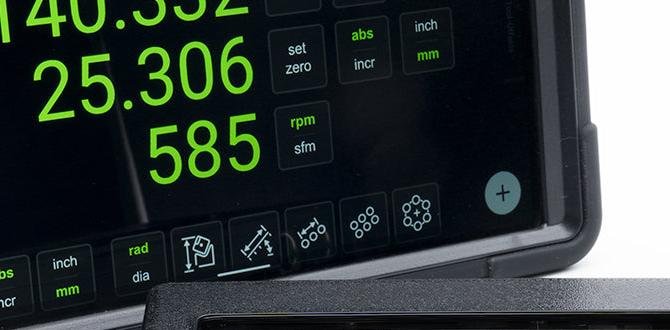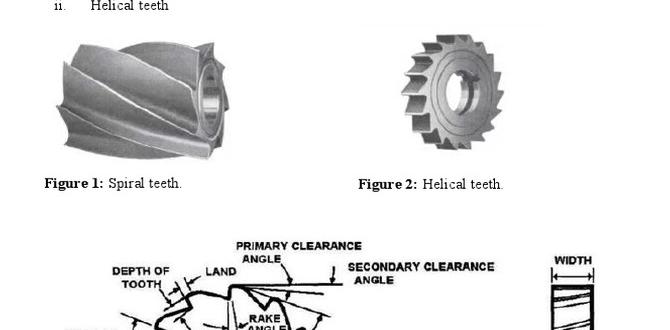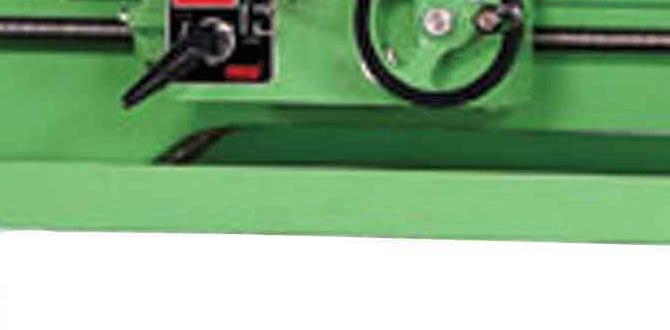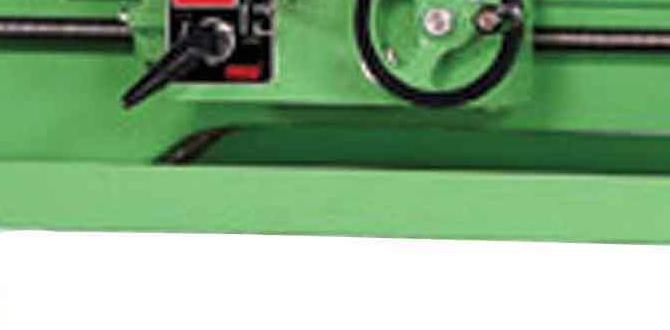Quick Summary:
A bowl chuck for your lathe is designed to securely hold wood bowls and similar items. It uses powerful jaws and often specialized adapters to provide a reliable grip, preventing pieces from flying off during turning. Understanding how to choose and use the right chuck is crucial for safety and achieving smooth, precise results on your lathe.
Hey there, fellow makers! Daniel Bates from Lathe Hub here. Let’s talk about one of those things that can feel a bit intimidating at first but is absolutely essential for turning bowls safely and efficiently: the bowl chuck for your lathe. If you’ve ever worried about your turning projects going airborne, or if you’ve struggled to get a really solid hold on those larger, sometimes unevenly shaped pieces, then you’re in the right place. Getting the right grip means smoother cuts, better finishes, and a whole lot more confidence as you move through your projects. We’re going to break down exactly what you need to know, step-by-step, so you can master this key piece of lathe equipment.
Bowl Chuck for Lathe: Mastering the Hold for Safer, Better Turning
As a machinist and a lifelong enthusiast of all things workshop, I’ve learned that the foundation of any good project on the lathe—whether it’s wood or metal—is a secure hold. For anyone getting into turning bowls, this is especially true. The sheer variety of shapes, sizes, and weights you’ll encounter means you need a chuck that offers versatility and, most importantly, powerful, reliable grip. A weak or improperly used chuck isn’t just frustrating; it’s a serious safety hazard. That’s why understanding the ‘bowl chuck for lathe’ is a fundamental skill you’ll want to develop early on.
In this guide, we’ll demystify the world of bowl chucks. We’ll cover what they are, why they are so important, how to choose the right one for your needs, and most importantly, how to use them safely and effectively. My goal is to equip you with the knowledge to feel confident every time you mount a piece on your lathe, leading to better results and a more enjoyable turning experience.
Why a Specialized Bowl Chuck is a Game-Changer
Turning a traditional spindle, like a table leg, is one thing. The material is usually symmetrical, balanced, and mounted between centers or in a standard four-jaw chuck. But when you start turning bowls or other hollow forms, the challenges multiply. Bowls are often off-balance, especially in their early stages. They can have irregular shapes, varying densities, and large diameters – all factors that put stress on your mounting system.
This is where a dedicated bowl chuck shines. Unlike other chucks, bowl chucks are specifically designed to:
- Grip Externally: For initial turning or when working on the exterior of a bowl, many bowl chucks excel at gripping the rim from the outside. This is incredibly useful when you’re hollowing out a piece.
- Grip Internally: Once you’ve hollowed out the inside, you often need to flip the piece around to refine the exterior. A bowl chuck can then be set up to grip the rim from the inside, or it can hold a jam chuck or a screw chuck that is itself mounted on the lathe.
- Offer a Wider Range of Grip: The jaw designs on bowl chucks are often engineered to distribute pressure more evenly across the workpiece, reducing the risk of crushing softer woods. They typically offer a larger expansion and contraction range than standard chucks.
- Provide Enhanced Safety: The core purpose is to provide a locking grip. When a bowl chuck is properly engaged, the forces of rotation are effectively countered, minimizing the chance of the workpiece becoming dislodged.
Think of it this way: trying to turn a large, slightly unbalanced bowl on a chuck not designed for it is like trying to carry a heavy, awkwardly shaped box with only a few fingers. It’s precarious. A bowl chuck, on the other hand, gives you a firm, secure handshake on the entire object, allowing you to focus on shaping and finishing.
Understanding the Anatomy of a Bowl Chuck
Before we dive into choosing and using one, it’s helpful to know the basic parts of a typical bowl chuck. While designs vary, most share common components:
- Body: The main housing of the chuck, which attaches to the lathe’s spindle.
- Jaws: These are the parts that actually grip the workpiece. Bowl chucks often come with a set of versatile jaws and can accept specialized jaws for different kinds of gripping.
- Operating Mechanism: This is usually a scroll mechanism (like a screw thread) combined with a pinion gear. Turning this gear moves the jaws in or out simultaneously, ensuring they remain centered.
- Jaw Slides: These are the tracks on the chuck body where the jaws move in and out.
- Mounting Thread: This is the threaded part on the back of the chuck that screws onto your lathe’s headstock spindle. It’s crucial that this matches your lathe’s thread size.
You’ll also encounter accessories like screw chuck jaws, faceplate jaws, jam chuck adapters, and various specialized jaw profiles, all designed to expand the gripping capabilities of your bowl chuck.
Table 1: Common Bowl Chuck Jaw Types and Their Uses
When you purchase a bowl chuck, it typically comes with a set of general-purpose jaws. However, understanding different jaw types can help you expand your capabilities. Here’s a quick overview:
| Jaw Type | Description | Primary Use Case | Ideal for… |
|---|---|---|---|
| Standard Jaws (G1, G2, etc.) | Often have rubber or urethane grips. Designed to expand or contract around a workpiece. | External grip on rims; internal grip on spigots or tenons. | General bowl exterior turning, re-enforcing internal cavities. |
| Dovetail Jaws | Feature angled jaws that grip into a corresponding “dovetail” recess (tenon) or outward on a matching “dovetail skirt.” | Strong, secure internal grip. | Hollowing out bowls, holding work with a precisely cut tenon. |
| Pin Jaws / Small Jaws | Smaller, more specialized jaws that grip very small diameters or internal recesses. | Holding small bowls, lids, or pieces with internal features. | Small decorative bowls, intricate lids. |
| Cole Jaws / Faceplate Jaws | These are larger, often flat or with significant grip surface, designed to attach to an existing faceplate or directly into the chuck body. | Holding unusually shaped pieces, large faceplates, or when a wide, stable grip is needed. | Large platters, irregularly shaped items, or small bowls mounted on a faceplate. |
| Screw Chuck Jaws | These jaws are designed to hold a threaded screw chuck securely, which then screws into the workpiece. | Gripping the exterior of hollow forms or bowls that are threaded internally or have a threaded insert. | Turning the foot of bowls, refining interior shapes when an internal spigot isn’t feasible. |
Choosing the Right Bowl Chuck: Key Considerations for Beginners
Selecting your first bowl chuck can feel like navigating a maze. There are many brands, types, and sizes. Here are the most important factors to consider as a beginner:
- Lathe Spindle Size: This is non-negotiable. Your chuck must have the correct Mountain thread size and direction to fit your lathe’s headstock spindle. Common sizes include 1″ x 8 TPI (Threads Per Inch), M33 x 3.5, and 3/4″ x 10. Check your lathe’s manual or measure it carefully. Getting an adapter if your chuck thread doesn’t match your spindle is an option, but direct fit is usually best. For example, many modern lathes use metric M33 x 3.5 threads, while older or smaller lathes might use imperial threads like 1″ x 8 TPI. Ensure compatibility!
- Chuck Size/Capacity: Bowl chucks are often rated by the range of workpiece diameters they can grip, both externally and internally. Consider the typical size of bowls you plan to make. A chuck with a wider gripping range offers more versatility. For instance, a chuck that can grip from less than an inch to over 20 inches is going to handle a vast array of projects.
- Jaw Versatility: Most good bowl chucks come with a set of versatile jaws that can be configured for both internal and external gripping. Look for a system where additional jaw sets are available, allowing you to expand your capabilities later without buying a whole new chuck.
- Quality of Manufacture: Cheaper chucks might seem attractive, but poor tolerances can lead to runout (wobble), inconsistent gripping, and premature wear. Investing in a reputable brand known for quality machining will pay dividends in accuracy and longevity. Brands like Oneway, Vicmarc, Nova (Teknatool), and Record Power are often well-regarded in the woodworking community for their chuck quality.
- Ease of Operation: How easy is it to open and close the jaws? Is the operating key comfortable to use? For beginners, a smooth, intuitive operation is key to building confidence and avoiding frustration.
- Included Accessories: What comes in the box? Some chucks are sold as a bare chuck with one set of jaws, while others might include a faceplate, an insert for different spindle threads, or extra jaw sets.
- Budget: Bowl chucks are an investment. While some excellent options exist at various price points, a quality chuck will likely be one of the more significant tool purchases you make for your lathe. Balance your budget with the quality and features you need.
Many woodturners start with a medium-sized chuck that has a good reputation for versatility, like a Nova G3 or a comparable model from another leading manufacturer. These often offer a broad grip range and readily available accessories, making them a solid choice for most beginners tackling bowls.
Safe and Effective Bowl Chucking: A Step-by-Step Approach
Now for the crucial part: how to actually use your bowl chuck safely! Every chuck is a bit different, so always refer to your specific manufacturer’s instructions. However, these general principles apply:
Step 1: Prepare Your Lathe and Workpiece
Ensure your lathe is stable and properly set up. If you’re using a new chuck, make sure it’s securely threaded onto your spindle. If you have an insert, ensure it’s the correct one for your lathe’s spindle thread size and that it’s seated properly. For woodturning, this usually involves creating a tenon (a protruding cylindrical section) or a recess in your workpiece.
- Tenon for External Grip: This is a cylindrical section left on the base of the bowl that the chuck jaws will expand onto. It needs to be sized correctly for your chuck’s jaws to grip it securely. Consult your chuck manufacturer’s guide for recommended tenon sizes for their jaws.
- Recess for Internal Grip: This is an opening in the base of the bowl that the chuck jaws will contract into. Again, proper sizing is critical.
For safety, it’s often recommended to create a tenon first, mount inside it, turn the exterior, and then create a recess in the exterior to mount on for turning the interior. For beginners, starting with a dedicated spigot or tenon for external gripping is often the easiest and safest way to begin hollowing.
A good resource for understanding basic woodturning techniques and preparation can be found at the American Association of Woodturners (AAW), which often provides educational materials and safety guidelines on their website.
Step 2: Mount the Workpiece
This is where the “grip power” of your bowl chuck comes into play. The method depends on whether you’re gripping externally or internally.
A. External Grip (e.g., gripping a tenon):
- Loosen the chuck jaws using the operating key until they are wide enough to fit over your tenon.
- Position the tenon of your workpiece in the center of the chuck, fitting it inside the jaws.
- Gently close the jaws around the tenon.
- Tighten the jaws sequentially, using the operating key. Turn the lathe faceplate by hand (power OFF!) between jaw adjustments. You want a snug, firm grip, but avoid overtightening, which can crush the wood or damage the chuck.
- The “Shake Test”: With the power OFF, gently try to wiggle the workpiece. It should feel absolutely solid. If there’s any movement, tighten the jaws further.
B. Internal Grip (e.g., gripping a recess):
- Expand the chuck jaws slightly so they are just starting to protrude into the recess.
- Carefully place the jaws into the recess of your workpiece.
- Close the jaws onto the inside surface of the recess.
- Tighten the jaws as before, turning the lathe by hand (power OFF!). Ensure a solid, even grip. The jaws should be making firm contact with the wood all around.
- The “Shake Test”: Again, check for any movement by hand.
C. Using a Screw Chuck or Faceplate:
Some situations require mounting the workpiece onto a screw chuck (which is held in the chuck) or directly onto a faceplate that is then mounted on the lathe. In these cases, you’re essentially screwing the workpiece onto the chuck assembly. Ensure the workpiece is centered and all fasteners (screws, bolts) are tight.
Step 3: Check for Runout and Wobble
Before engaging the lathe’s power, with the chuck and workpiece securely mounted:
- Turn the lathe ON to its lowest speed setting.
- Observe the workpiece. Does it run true? Is there excessive wobble? A small amount of runout is sometimes unavoidable, especially with irregularly shaped wood, but significant wobble can indicate an improperly mounted piece or a faulty chuck setup.
- If there’s excessive wobble, turn the lathe OFF immediately. Re-check the grip, reposition the workpiece if necessary, and ensure all jaws are evenly tightened.
Step 4: Turn at Appropriate Speeds
This is a critical safety step. The faster the lathe spins, the greater the centrifugal force acting on your workpiece. This force tries to fling the piece off the chuck. Always adhere to safe turning speeds:
- Start Slow: Begin at the lowest possible speed on your lathe.
- Gradually Increase: As you turn the piece to make it more balanced and concentric, you can gradually increase the speed.
- Consult Speed Charts: Woodturning resources, like those from the AAW, often provide recommended speed charts based on workpiece diameter and type. A common rule of thumb is that larger diameter pieces should be turned at slower speeds due to the increased centrifugal force. For example, turning a 12-inch diameter bowl might be done at 400-600 RPM, while a 4-inch diameter spindle could be turned much faster, perhaps 1500-2000 RPM.
- Listen to Your Workpiece: If you hear any unusual vibrations or noises, slow down immediately.
- Consider the Wood: Green wood is heavier and can be less stable than dry wood. Always err on the side of caution with speed.
According to the Occupational Safety and Health Administration (OSHA), proper machine guarding and operator training are essential for safety in industrial settings, and these principles absolutely extend to your home workshop. A secure workpiece is a fundamental aspect of workshop safety.
Step 5: Re-tensioning Jaws (When Necessary)
As you turn, especially with softer woods or when taking heavy cuts, the jaws can sometimes relax their grip slightly, particularly if the wood compresses. It’s good practice to periodically:
- Turn the lathe OFF.
- Check the grip by hand.
- If the grip feels less secure, re-tighten the jaws slightly, turning the lathe by hand between adjustments.
- Restart at a slow speed and check for wobble.
Step 6: Removing the Workpiece
Always ensure the lathe is completely stopped before attempting to remove the workpiece. Loosen the jaws sufficiently to release the workpiece without excessive force that could damage the wood or the chuck.
Troubleshooting Common Bowl Chucking Issues
Even experienced turners run into occasional problems. Here are a few common issues and how to address them:
- Workpiece Wobbles Excessively:
- Cause: Improperly mounted tenon/recess, uneven jaw pressure, workpiece is not centered, workpiece is out of balance, or chuck is not running true.
- Solution:


